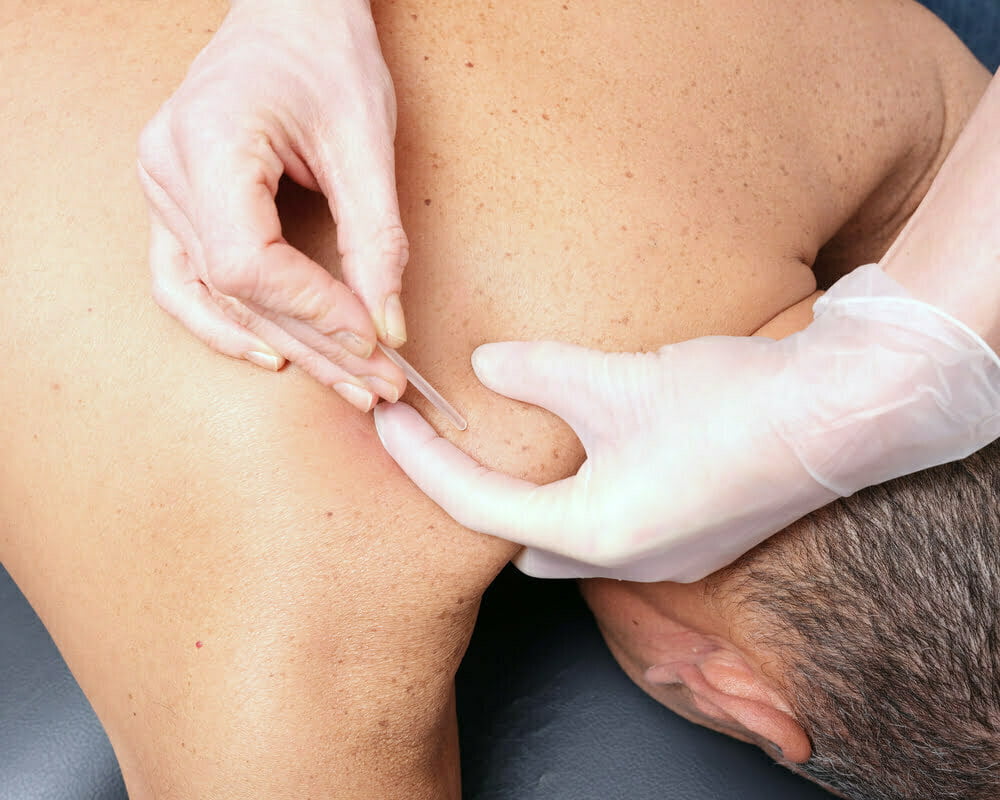
A Physiotherapist from our Winnipeg physiotherapy clinic may choose dry needling as a part of your treatment plan. Dry needling treatment is administered to reduce muscle pain and swelling, as well as, stimulate the healing process. The single-use, sterile needles are very thin and placed at specific trigger points designed to stimulate certain areas (nerve, muscle, joint, tendon, etc.).
Dry Needling FAQs
Is Dry Needling painful?
Dry Needling is marginally more painful than traditional acupuncture. The single-use sterile needles used for dry needling are slightly thicker for structural integrity. The conditions chosen to treat in this way tend to be more so of the chronic type, thus these areas may tend to be mildly more hypersensitive to stimuli. Penetration of a normal and healthy muscle is painless. An irritated muscle will sometimes grasp the needle being inserted, thus resulting in minor pain, however, is followed by a feeling of relaxation as the larger muscle group eases. However, dry needling no longer requires the needles to stay in once the local twitch response is triggered at the trigger point. This makes the treatment of each muscle very quick.
What are the benefits of Dry Needling?
Dry Needling causes relaxation of muscle spasms, debriding of scar tissue or muscle adhesions, as well as, pain reduction by stimulating the body’s natural pain relievers called endorphins and the natural anti-inflammatory chemicals from our Nervous system to reduce swelling and muscle pain as a result of Dry Needling.
When would Dry Needling be implemented into my treatment plan?
Dry Needling could be administered with your consent for chronic muscle pain or spasms, chronic pain not responsive to other treatment techniques, the release of adhesions, and increasing joint mobility and/ or muscle flexibility. Ie. Tennis elbow, rotator cuff tendonitis, frozen shoulder, chronic low back pain, and many more.




